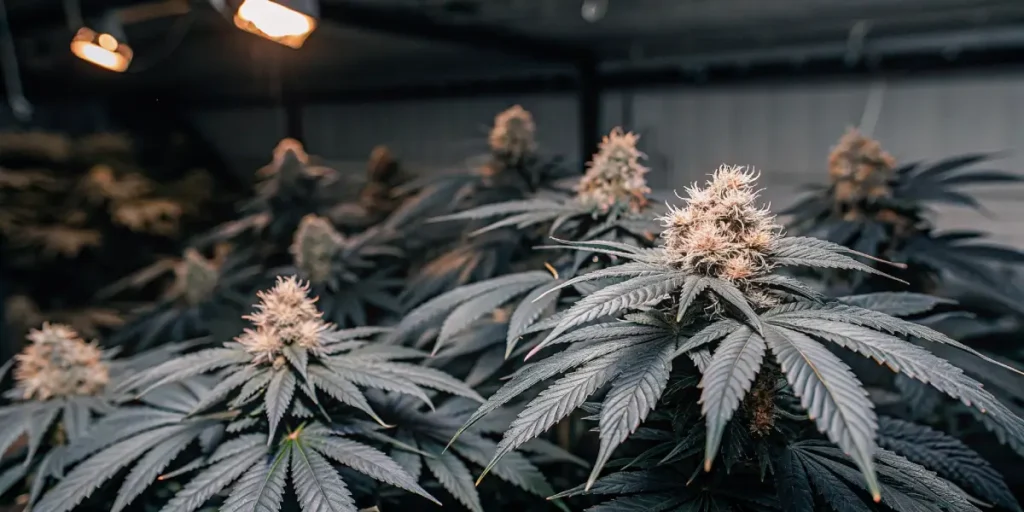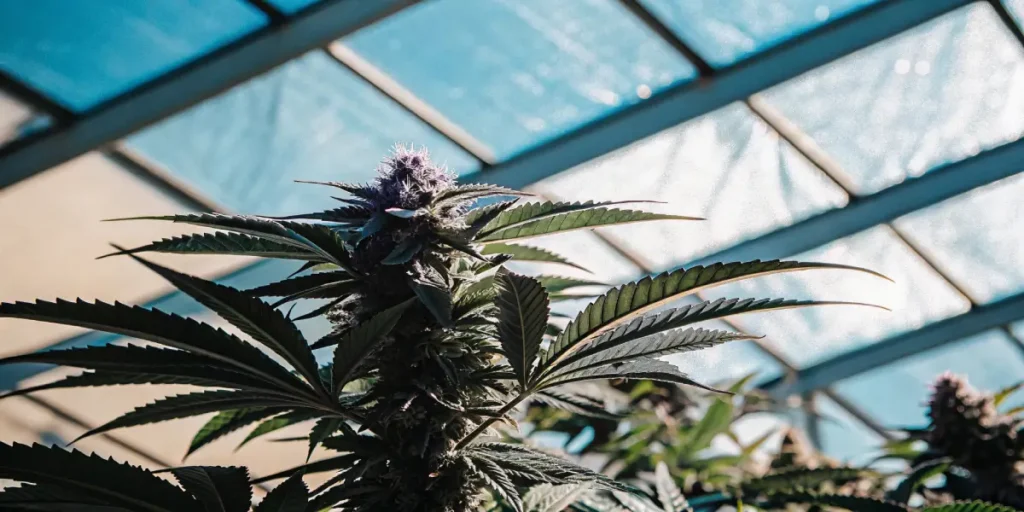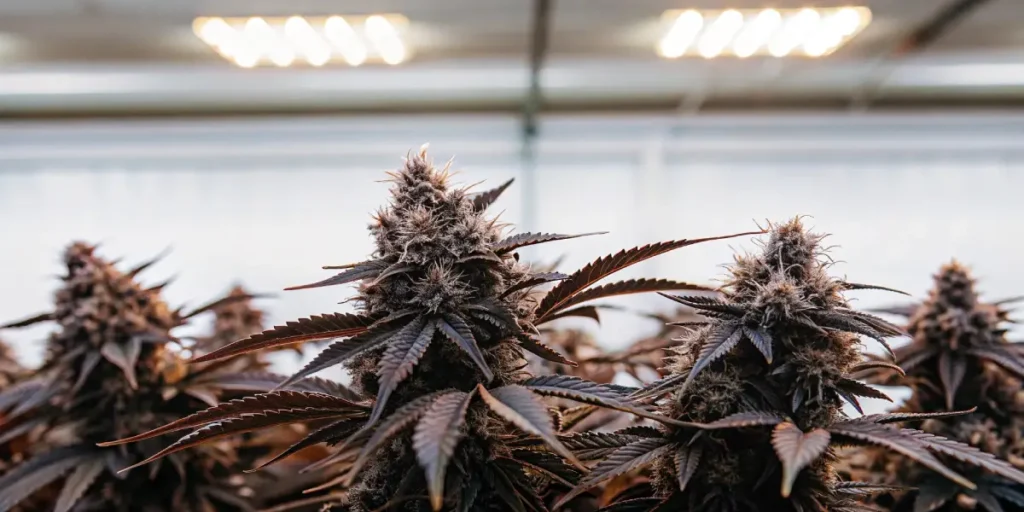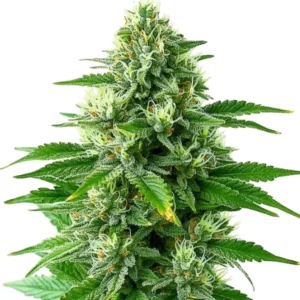
Heavy Feeding Cannabis Strains
Heavy feeding cannabis strains require a lot of nutrients to thrive. Unlike other strains, these plants demand higher levels of nitrogen, phosphorus, and potassium. These nutrients are essential for their growth and maximizing their yield. If you’re aiming for a bountiful harvest, knowing the nutrient needs of these strains is crucial.
Some cannabis strains naturally consume more nutrients than others. These high nutrient cannabis strains benefit from regular feeding schedules. By supplying the right amount of nutrients, you ensure that your plants grow strong and healthy. This is especially important during the flowering stage when the demand for nutrients peaks.
Recommended Strains
Bruce Banner #3
|
|
THC | 20% - 29% (High) |
|
|
Type | Feminized |
|
|
Yield | Medium |
|
|
Phenotype | 50% Indica / 50% Sativa |
Bruce Banner Fast Version
|
|
THC | 25% - 32% (High) |
|
|
Type | Fast Flowering |
|
|
Yield | Medium |
|
|
Phenotype | 70% Indica / 30% Sativa |
Choosing the best fertilizers for heavy feeding cannabis is key. Look for options that provide a balanced blend of macronutrients and micronutrients. Products specifically designed for cannabis can help you achieve optimal growth. Remember, too much or too little can harm your plants, so monitoring and adjusting is necessary.
Strains That Love Nutrients
Some cannabis strains are known for their heavy feeding nature. These strains thrive with ample nutrients and reward growers with impressive yields. An example is the Gorilla Glue #4 strain available at Blimburn Seeds. This strain is famous for its potency and high resin production, and it benefits greatly from rich nutrient feeding.
Another heavy feeder is the Bruce Banner 3 strain. This strain is popular for its strength and fast growth. Providing it with nutrient-rich soil for cannabis cultivation ensures it reaches its full potential. This strain can handle higher nutrient levels, making it a favorite among experienced growers.
Adding to the list of high nutrient cannabis strains, the Amnesia Haze is renowned for its ability to absorb nutrients efficiently, resulting in robust growth. This strain, with its elongated flowering period, requires consistent feeding to maintain its vigor and ensure a high yield of potent buds.
Another notable mention is the Green Crack strain, which thrives under a nutrient-rich regimen. Known for its energizing effects, this strain demands a diet rich in macronutrients and thrives when given the best fertilizers for heavy feeding cannabis. Tailoring your nutrient schedule to meet its needs will lead to optimal growth and production.
Promos & Deals
How to Feed Heavy Feeding Strains
Feeding heavy feeding cannabis strains requires a structured approach. Begin with a soil rich in organic matter. This kind of soil acts as a reservoir for nutrients, releasing them slowly as the plant grows. Compost, worm castings, and bat guano are great additions to your soil mix.
Regular feeding schedules are critical. Start with a well-balanced nutrient mix in the vegetative stage. As the plant transitions to flowering, increase the phosphorus and potassium levels. This adjustment supports bud development and increases yield. Always monitor the plants for signs of nutrient deficiency or excess.
Incorporating organic fertilizers can also enhance the quality of your nutrient-rich soil for cannabis cultivation. Organic options such as fish emulsion and kelp meal can provide additional micronutrients that are essential for plant health. These supplements can be particularly beneficial during the early stages of growth.
Moreover, ensuring a balanced microenvironment is crucial. Factors such as temperature and humidity can influence nutrient uptake. Heavy feeding cannabis strains often perform best in environments where these conditions are optimized, allowing for better absorption and utilization of nutrients.

Best Fertilizers for Heavy Feeding Cannabis
Choosing the best fertilizers for heavy feeding cannabis strains involves selecting products tailored for cannabis cultivation. These fertilizers often contain a blend of macronutrients and micronutrients essential for plant growth. Look for products that list their nutrient ratios clearly on the packaging.
Consider using liquid fertilizers for easy application and quick absorption by the plants. These are particularly useful during the flowering stage. For example, a liquid fertilizer with a higher phosphorus content can help boost flower production and resin development.
When selecting fertilizers, it’s important to consider the specific needs of your high nutrient cannabis strains. Some strains may benefit from additional calcium and magnesium, which can prevent common deficiencies and promote strong stems and vibrant foliage.
Experimentation with different fertilizer brands and formulations can also be part of optimizing nutrients for cannabis heavy feeders. It’s advisable to start with a conservative approach, gradually increasing nutrient concentrations to avoid overwhelming the plants and risking nutrient burn.
High-Yield Cannabis Strains Nutrient Requirements
High-yield cannabis strains have specific nutrient requirements to achieve their maximum potential. These strains often need more nutrients compared to standard varieties. For example, the Black Domina strain from Blimburn Seeds is known for its high yield and quality. Providing it with ample nutrients can significantly enhance its growth.
During the vegetative stage, these strains benefit from higher nitrogen levels. Nitrogen supports leaf and stem growth, crucial for establishing a strong foundation. As the plant enters the flowering phase, the focus shifts to phosphorus and potassium to support bud development.
Knowing the high-yield cannabis strains nutrient requirements is essential for maximizing their potential. Providing a balanced nutrient solution that adapts to the plant’s growth stages can lead to impressive yields and potent flowers.
Besides to macronutrients, micronutrients such as zinc, manganese, and iron play a crucial role in the overall health and productivity of high-yield strains. Ensuring these elements are available in the soil or growing medium will support robust growth and optimal bud formation.
Optimizing Nutrients for Cannabis Heavy Feeders
Optimizing nutrients for cannabis heavy feeders involves careful monitoring and adjustment. Start by testing the pH of your soil or growing medium. Cannabis plants thrive in a slightly acidic environment, with a pH range of 6.0 to 6.5. This range ensures optimal nutrient uptake.
Regularly check for signs of nutrient deficiency or toxicity. Yellowing leaves, burnt tips, or slow growth can indicate an imbalance. Adjust your feeding regimen accordingly, either by increasing or decreasing specific nutrients based on the plant’s needs.
Adopting a dynamic feeding strategy can further enhance the performance of heavy feeding cannabis strains. This involves closely observing the plant’s response to different nutrient levels and making timely adjustments to meet its evolving demands.
Moreover, utilizing advanced tools such as soil moisture meters and nutrient solution testers can provide valuable insights into the growing conditions. These tools assist in maintaining the ideal environment for nutrient absorption, ensuring that the strains reach their full potential.

FAQs
What are some signs of nutrient deficiency in heavy feeding cannabis strains?
Nutrient deficiencies often manifest as changes in leaf color and overall plant vigor. Common signs include yellowing leaves, which may indicate a lack of nitrogen. Additionally, if leaves develop brown spots or edges, this might suggest a potassium deficiency. Monitoring the plant’s appearance regularly can help catch these issues early.
Another indicator is stunted growth. If your cannabis plant is not growing at the expected rate, it might not be receiving adequate nutrients. Adjusting the nutrient mix and ensuring the pH level is appropriate can help address these deficiencies effectively.
Other symptoms to watch for include purpling of the stems or leaves, which can be a sign of phosphorus deficiency. Similarly, curling or twisting leaves might indicate a calcium or magnesium imbalance, common in high nutrient cannabis strains.
Addressing these deficiencies promptly through the use of the best fertilizers for heavy feeding cannabis can prevent long-term damage and help restore the plant’s vitality. Regularly updating your nutrient regimen based on observed symptoms is a key part of successful cultivation.
How often should I feed my heavy feeding cannabis strains?
Feeding frequency depends on the growing medium and the specific strain’s needs. Generally, heavy feeders benefit from being fed every other watering. This schedule allows the plant to absorb nutrients effectively without overwhelming the root system.
During the flowering stage, you might need to adjust the frequency to match the plant’s increased nutrient demands. Observing the plant’s growth and responding to any signs of deficiency or excess can guide you in maintaining the right feeding schedule.
It’s also beneficial to incorporate a flush of the growing medium every few weeks. This practice helps to clear out any salt buildup from excess nutrients, preventing lockout and ensuring the roots remain healthy.
Experimenting with different feeding intervals can also help optimize nutrients for cannabis heavy feeders. This approach allows you to tailor the feeding schedule to the plant’s specific requirements, leading to better growth and yield outcomes.
Can I use homemade fertilizers for heavy feeding cannabis strains?
Yes, homemade fertilizers can be an effective solution for heavy feeding cannabis strains. Compost tea, for instance, is a popular organic option that provides a rich nutrient mix. It can be made by steeping compost in water, creating a nutrient-rich solution.
Another option is creating a blend of banana peels, eggshells, and coffee grounds. These materials are rich in potassium, calcium, and nitrogen, respectively. However, always monitor your plants for any adverse reactions when using homemade fertilizers, as nutrient concentrations can vary.
Homemade fertilizers can also include fish bone meal and seaweed extract, which are excellent sources of phosphorus and potassium. These natural ingredients can provide the necessary nutrients without the risk of chemical buildup.
Despite the benefits of homemade options, it’s crucial to understand the nutrient needs of your specific strains and adjust your homemade blends accordingly. This ensures that heavy feeding cannabis strains receive a balanced diet for optimal growth.
What is the function of pH in nutrient uptake for cannabis plants?
pH plays a crucial role in nutrient uptake for cannabis plants. The pH level affects the availability of nutrients in the soil. If the pH is too high or too low, certain nutrients become inaccessible to the plant, leading to deficiencies even if the nutrients are present.
For optimal growth, maintain a pH range between 6.0 and 6.5. This range allows cannabis plants to absorb essential nutrients effectively. Regularly test the pH of your soil or water to ensure it remains within this optimal range.
Adjusting the pH can be done using pH-up or pH-down solutions, which help bring the growing medium into the desired range. This adjustment is particularly important for hydroponic systems where nutrient availability is directly tied to pH levels.
Monitoring pH should be a part of your routine when growing heavy feeding cannabis strains, as fluctuations can lead to nutrient lockout and adversely affect plant health. Keeping a log of pH levels and plant responses can aid in maintaining a stable growing environment.
Why do heavy feeding cannabis strains require more nutrients?
Heavy feeding cannabis strains require more nutrients due to their rapid growth and high yield potential. These strains have a vigorous growth pattern, demanding more resources to support their development. Providing adequate nutrients ensures they reach their full potential in terms of size and potency.
Additionally, these strains often produce larger buds and more resin, which requires additional nutrients for production. Ensuring a consistent and balanced supply of nutrients helps maximize yield and quality, making it essential for growers aiming for top-notch results.
The enhanced metabolic activity in these strains fuels their increased nutrient demand. This trait is why tailoring nutrient regimens to their specific needs is crucial for achieving the best outcomes in both yield and quality.
Furthermore, knowing the high-yield cannabis strains nutrient requirements equips growers with the knowledge to provide a comprehensive nutrient solution. This is vital to supporting the plant’s vigorous growth and abundant flowering, ensuring a successful harvest.



















